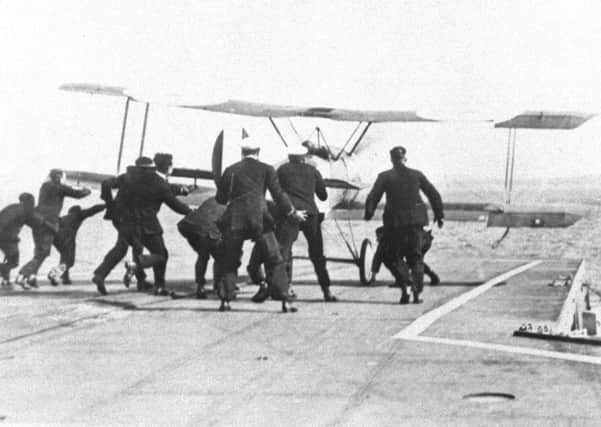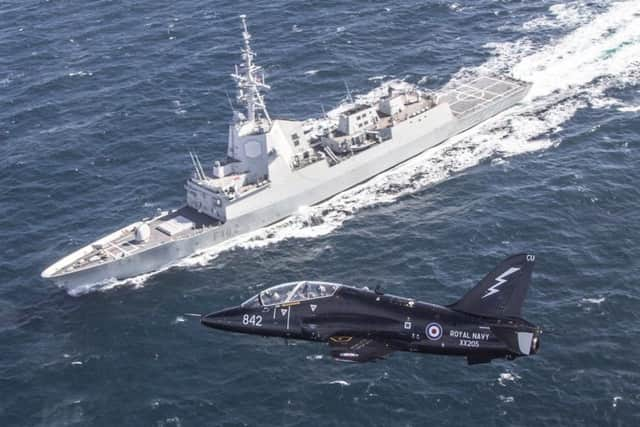Historic aircraft landing a century ago in Orkney remembered


The date 2 August 1917 has gone down in naval history as the dawn of aviation from aircraft carriers.
It was the day Squadron Commander Edwin Dunning touched down in a Sopwith Pup biplane on HMS Furious as the warship steamed through the waters of Scapa Flow.
Advertisement
Hide AdAdvertisement
Hide AdRear Admiral Fleet Air Arm Keith Blount, Assistant Chief of Naval Staff, paid tribute to Dunning’s courage and sacrifice when he unveiled a new memorial to the pioneering pilot at Scapa.


Earlier during the service on Wednesday, the largest warship ever built for the Royal Navy, HMS Queen Elizabeth, arrived in Scapa Flow. Shortly afterwards, a Royal Navy helicopter touched down on its flight deck, 100 years since Dunning’s historic landing.
The huge new carrier is currently undergoing sea trials after setting out from Rosyth dockyard in Fife in June and steamed from Scapa Flow at the end of the memorial event.
During the service of thanks giving held at Scapa, there was a flypast by a modern day Royal Navy aircraft, a Hawk T Mk 1 from 736 Naval Air Squadron.


The Hawk first flew fast and low over the bay and the wider waters of Scapa Flow, before making a second pass in landing configuration - with wheels and wing flaps extended - simulating an aircraft carrier landing approach.
Rear Admiral Blount, who laid a wreath at the new memorial plaque, said: “We’re commemorating the very first landing by an aircraft on a ship that was moving at sea, a huge event in the history of the Royal Navy, for the Fleet Air Arm and for Orkney.
“Squadron Commander Dunning achievement is of enormous significance and, of course, tragically he died five days later trying to touch down again on HMS Furious. He caught a gust of wind, the crew couldn’t hold on to his plane, and he went into the water, knocked himself unconscious and drowned.
“Dunning quite literally sowed the seed that led to the take off and landing of aircraft from ships at sea becoming common place. He convinced the doubters that this was the way forward and very quickly aircraft carriers became an important part of naval operations.
Advertisement
Hide AdAdvertisement
Hide Ad“It was very fitting that the next generation of aircraft carrier, HMS Queen Elizabeth, was out in the bay at the beginning of a new chapter in maritime aviation. It all started with Edwin Dunning. Every nation around the world operating aircraft carriers owes him a debt of gratitude.”
The outdoor service was led by the Rev Fraser Macnaughton, Minister of St Magnus Cathedral, Kirkwall.
He said the pioneering aviators like Edwin Dunning had shown a courageous can-do attitude that had become legendary.
“There can be no more magnificent backdrop to our service in his memory than to be graced the presence of the band new aircraft carrier, HMS Queen Elizabeth, out in the bay,” he added.
The new plaque was produced by local craftsman Stuart Wylie.
